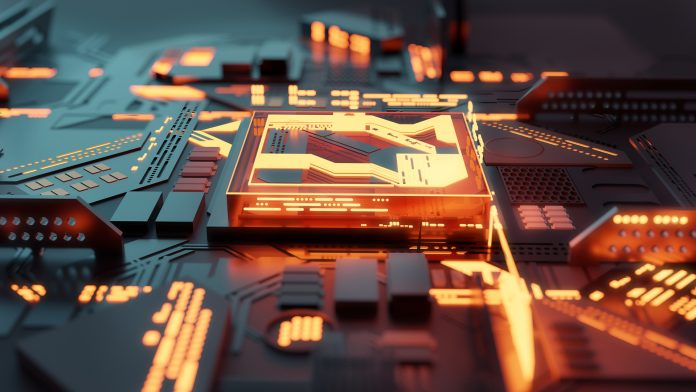A collaborative research team investigated two problems in quantum computing: breaking the encryption of Bitcoin (a digital currency) and simulating the molecule responsible for biological nitrogen fixation.
How big does a quantum computer need to be to detect and solve problems?
Researchers employed a tool that was supplied by the American Institute of Physics (AIP) in AVS Quantum Science. This allowed them to determine both, exactly how big the computer needed to be, and how long it would take, to solve problems.
“The majority of existing work within this realm focuses on a particular hardware platform, superconducting devices, like those IBM and Google are working toward,” explained Mark Webber, of the University of Sussex. “Different hardware platforms will vary greatly on key hardware specifications, such as the rate of operations and the quality of control on the qubits (quantum bits).”
What is error correction and why is it necessary?
The advances in quantum computing applications with the most potential success cases will utilise an error-corrected quantum computer. This is because error correction facilitates running longer algorithms by compensating for inherent errors inside the quantum computer. However, this does come at the cost of more physical qubits.
What advantages could potentially derive from addressing these issues?
Producing ammonia for fertilisers is done by pulling nitrogen out of the air, although this process is considered particularly energy intensive. Therefore, improvements to the process could result in a higher rate of efficiency, as well as impacting both world food scarcity and the climate crisis.
However, the simulation of the relevant molecules required is currently beyond the abilities of the world’s current fastest supercomputers, but this task should be within the reach of the next-gen quantum computers.
How did the team tackle these concerns?
Webber commented: “Our tool automates the calculation of the error-correction overhead as a function of key hardware specifications.
“To make the quantum algorithm run faster, we can perform more operations in parallel by adding more physical qubits. We introduce extra qubits as needed to reach the desired runtime, which is critically dependent on the rate of operations at the physical hardware level.”
Most quantum computing hardware platforms are limited because only qubits right next to each other can interact directly. In other platforms, such as some trapped ion designs, the qubits are not in fixed positions and can instead be physically moved around, which means each qubit can interact directly with a wide set of other qubits.
“We explored how to best take advantage of this ability to connect distant qubits, with the aim of solving problems in less time with fewer qubits,” said Webber. “We must continue to tailor the error-correction strategies to exploit the strengths of the underlying hardware, which may allow us to solve highly impactful problems with a smaller-size quantum computer than had previously been assumed.”
Is Bitcoin in danger from the development of quantum computing applications?
Quantum computers, when compared to classical computers, are considered to be exponentially more powerful when it comes to breaking encryption techniques.
The world utilises RSA encryption for most of its secure communication, and the encryption that is employed by Bitcoin (elliptic curve digital signature algorithm) will one day be vulnerable to a quantum computing attack. However, scientists stress that, presently, even the largest supercomputer could never pose a serious threat.
The researchers have estimated that the time a quantum computer would need to break the encryption of the Bitcoin network, within the small window of time it would actually pose a threat to do so, likely ranges from minutes to hours.
It has been noted that the encryption breaking would likely need to take place between its announcement and integration into the blockchain, and the greater the fee paid on the transaction will shorten the window of opportunity.
“State-of-the-art quantum computers today only have 50-100 qubits,” said Webber. “Our estimated requirement of 30 [million] to 300 million physical qubits suggests Bitcoin should be considered safe from a quantum attack for now, but devices of this size are generally considered achievable, and future advancements may bring the requirements down further.
“The Bitcoin network could perform a ‘hard-fork’ onto a quantum-secure encryption technique, but this may result in network scaling issues due to an increased memory requirement.”
How long until quantum computing is utilised regularly?
The researchers emphasise that the rate of improvement of both quantum algorithms and error- correction protocols is still very much under development, and while excellent advancements have been made, there is still a long way to go.
“Four years ago, we estimated a trapped ion device would need a billion physical qubits to break RSA encryption, requiring a device with an area of 100-by-100 square meters,” said Webber. “Now, with improvements across the board, this could see a dramatic reduction to an area of just 2.5-by-2.5 square meters.”
This means that a large-scale error-corrected quantum computer should be able to solve important problems classical computers cannot.
“Simulating molecules has applications for energy efficiency, batteries, improved catalysts, new materials, and the development of new medicines,” concluded Webber.” Further applications exist across the board — including for finance, big data analysis, fluid flow for airplane designs, and logistical optimisations.









